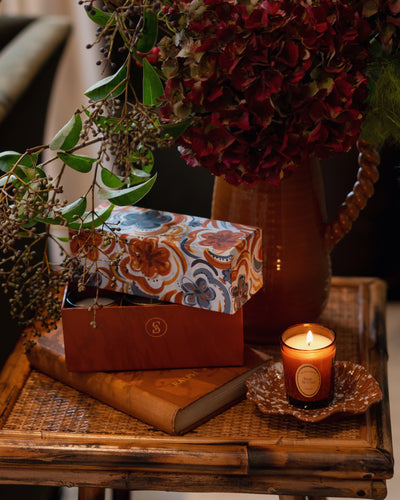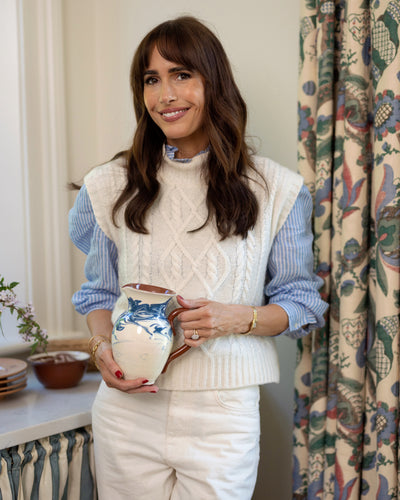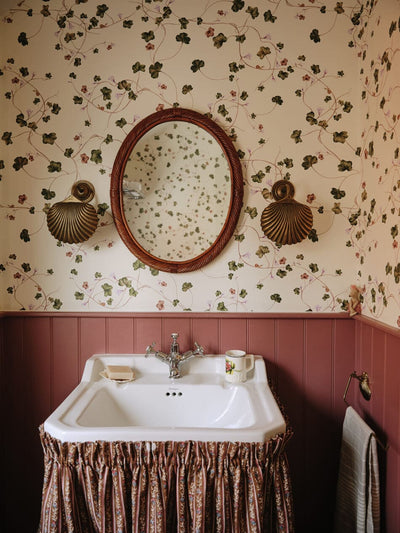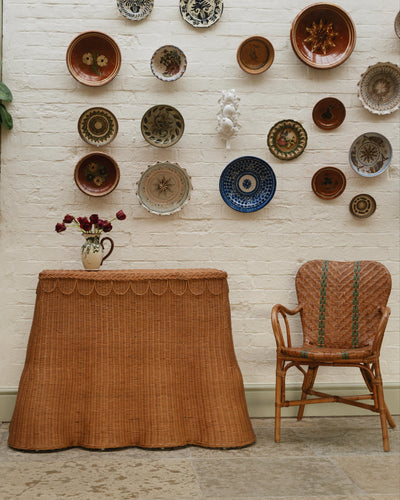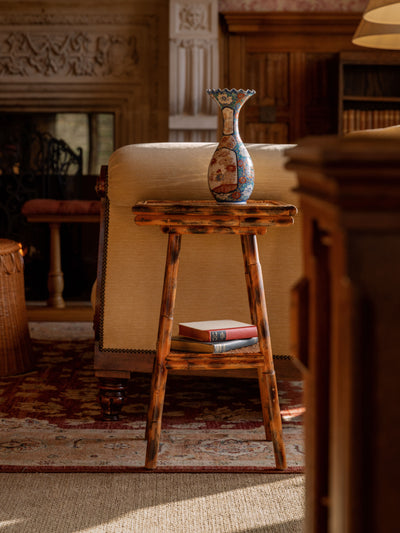Patterns are one of the simplest ways to bring personality into a home, but can be intimidating to use, let alone mix! You don’t need to rely solely on wallpaper, but also mix patterns with many other elements of the home, like textiles, decorative accessories, and artwork.
Whether you’re redecorating your living room, making over your kitchen, or just refreshing the guest bed with some patterned pillows, here are my tips on how to get it right.
1. Start from your space.
Is it compact or expansive? How much natural light does it get? How can you enhance the space’s architectural details, like mouldings, floors, or any built-ins? Notice what textures already exist in your space (maybe it’s wooden wall panels or exposed beams) and let them guide you in your design choices.
Next, visualise the room and start thinking about a colour scheme. Do you want hues of blues, pops of pinks and greens, or a sunny yellow space? When planning, try to keep your palette focused; too many colours can make a room feel chaotic.
In smaller rooms, use patterns to enhance depth and create the illusion of space; walls and even ceilings are your best canvas. Yes, ceilings! Adding a fifth patterned wall will make your space feel more spacious and will give it character and drama. In larger rooms, I’d recommend adding patterns through textiles; think curtains, cushions, and upholstery rather than on the walls, which can quickly feel overwhelming if overdone.
Light bounces off patterned surfaces differently, and when done right, it can make a compact space feel layered rather than cramped. In dimmer or north-facing rooms, I’d go for lighter or reflective patterns to keep things airy, while in bright spaces, richer tones and denser motifs can add cosiness without shrinking the room. Let the pattern work with the room, not against it.
2. Moodboard away.
I love this step! Pinterest is my go-to for digital moodboarding, but honestly, I love making physical moodboards the most. There’s something so satisfying about tearing out pages from old magazines, pinning on scraps of vintage fabric or ribbon I’ve collected over the years, it’s messy in the best way. I use the same approach when designing new pieces for Sharland England. It’s all about getting a feel for what I’m drawn to, without overthinking it. Just start pulling what you love, and eventually, a clear vision starts to take shape.
For inspiration, browse magazines and leaf through your coffee table books - these are my absolute favourites, incredibly inspiring but also beautiful to display.
3. Layer with intention
Mixing patterns is easy, but making it look balanced & chic is something else. If all your patterns are the same size and symmetry, it will give a stiff “hotel room” effect.
Start with a bold, large-scale print as your anchor. Have this on a headboard, sofa or curtains (the focal points of the room). Then add a medium-scale pattern, something that echoes the tones or shapes of your centrepiece. Finally, bring in a small-scale detail: a wallpaper, a trim, stripes, or a texture. For contrast that feels intentional rather than chaotic, mix structured patterns (like stripes or checks) with organic ones (such as chintz or abstract prints).
But it’s not just about print. Layer texture too: mix quilted with woven, embroidered with raw linen. Once you’ve got depth through texture, think about contrast through colour. Opposite colours on the wheel create a kind of visual friction in the best way. Green and pink, or cognac and blue (my favourite), instantly wake up a space. They might sound bold, but when grounded in good texture and thoughtful placement, they feel balanced. I’ve used this trick throughout my home, like my guest bedroom, where a green patterned headboard is paired with a pink lamp base and a chintz pillow that pulls both colours together through subtle accents, creating harmony from contrast.
4. Go big or go small
Bigger rooms can handle a bolder pattern scale, so don’t be afraid to mix a large floral or stripe with something tighter like a checkered motif. Just make sure there’s a common colour thread running through. This will make the space feel cohesive and not chaotic.
For smaller rooms, I recommend having a smaller-scale design for the wallpaper. It helps the room feel more expansive. In general, unlike larger print, small-scale patterns leave you more options for how to decorate the rest of your space. This is because, from a distance, small prints often present as a texture rather than a pattern, making them easier to layer with other elements. It also doesn’t immediately command attention, so it sits more quietly in a room, allowing other elements like bold furniture, art, or textiles to shine without competing.
5. Nail the Matchy look
Getting the matchy-matchy look right is about striking the balance between cohesion and subtle variation. Using the same fabric across multiple surfaces: walls, curtains, upholstery, and cushions can create a sense of calm continuity, rather than visual overload, if the print is carefully chosen. Smaller-scale patterns or those with a softer colour palette tend to work best, especially in more intimate rooms like bedrooms or sitting rooms. Think one or two colours on a pale background, or a carefully scaled chintz design. This prevents chaos and keeps the space feeling fresh.
The look nods to traditional decorating but can feel modern when grounded with clean-lined furniture & minimal accessories. To stop it from feeling flat, I like to introduce gentle contrasts, such as piping in a complementary colour or a plain cushion in one of the tones from the main fabric. It’s a way of layering without disrupting the rhythm of the room.
6. Travel with your Patterns
I love when patterns are not only a chic mix of patterns but cultures too, like putting a Suzani footstool in the centre of an old, vintage, handwoven English rug. Your home should be filled with things that tell your story, who you are, what you love and where you’ve travelled to. Decor and patterns specifically can take you from the flower-filled courtyards of Jaipur to the quiet English countryside, and from a Parisian café to a Moroccan riad.
7. Add patterns with small items
Adding pattern to your space goes beyond the furnishings and the wallpaper. You can do that through little accents of pattern in small vases, chintz pillows, picture frames, and table linens, too. I adore adding patterns and colour, with little vases, for example. See how I style them around my house here! I also love mixing in antique objects and artwork, which I find at fairs, flea markets, and online, from eBay and Etsy to LoveAntiques online and at auctions.









